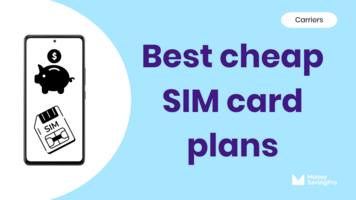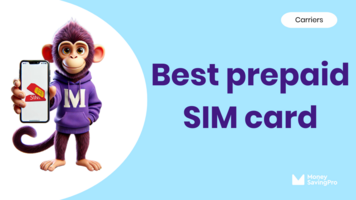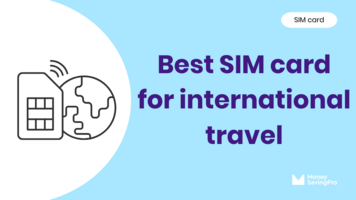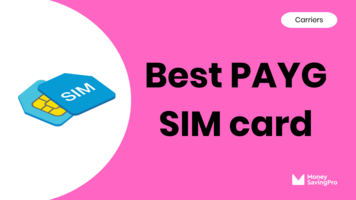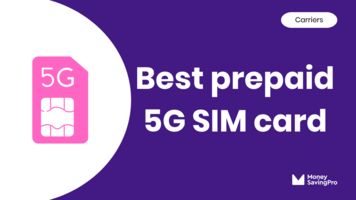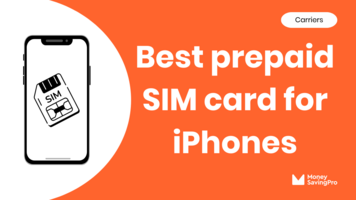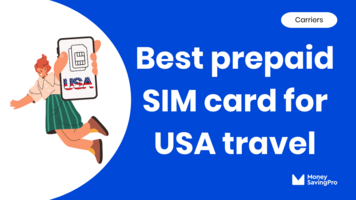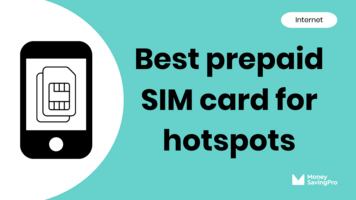Best free SIM card with unlimited data in 2025
Uncovering the most affordable prepaid unlimited plan with a free SIM card is all about leveraging the competitive rates offered by low-cost carriers. You'll get the same coverage for a fraction of the cost without the worry of hidden fees and price hikes. Here are my top picks for 2024.
How to choose the best unlimited SIM card plan
Which network do you prefer?
Low-cost carriers are powered by the same 5G and 4G LTE networks as the big 3. According to a 5G Experience Report (2023) by Opensignal, T-Mobile has the most extensive 5G coverage in the United States. If you have a preference for a specific network, you can find an MVNO that operates on that network. To discover the best cell phone service in your area, make sure to use our coverage checker.
How much data do you need?
Do you really need a prepaid SIM card for unlimited data? The big 3 wireless companies want you to believe so, but in reality, the average monthly cellular data consumption is around 10GB. Because if you spend most of your time at home or work on Wi-Fi, it's likely your cellular data usage will be much lower. You can pick a plan with enough data to fit your needs with cheap cell phone providers, meaning if you use less, you can pay less. But if you do choose an unlimited data SIM card, be aware that high-speed data is normally capped.
Is mobile hotspot data included?
Many MVNOs permit the usage of hotspot data. However, they impose restrictions on the quantity of data that can be used through tethering. The specific limit varies depending on the carrier and plan that you select. Additionally, some low-cost carriers provide exclusive data only SIM cards designed specifically for iPads, tablets, and mobile hotspots.
What's the monthly cost?
While an unlimited data SIM card with the big 3 wireless costs around $75-90 per month, the best MVNOs offer budget-friendly SIM cards, ranging from $5-35 per month without compromising coverage or data speeds. Watch out for hidden fees & taxes; some providers include these in the price, and others, such as Verizon and AT&T, don't.
How many lines do you need?
With big wireless, you only get the low advertised price if you buy four lines. With low-cost carriers, the price you see is what you pay, even for one line. Some MVNOs also offer further discounts for multi-line plans.
Can I bring my own phone or buy a new device?
While big wireless prioritizes keeping their customers in a perpetual cycle of phone upgrades, MVNOs advocate for bringing your own device. This empowers you to regain control and only switch phones when it's convenient for you. In the event that you do decide to buy a new phone, most MVNOs provide the option for 0% financing spread across 1-2 years.
Are there any promotions?
Promotions from big wireless can seem great at first. But once you read the fine print, it often leads to buying things you don't need and committing to 3-year phone contracts. Most MVNOs offer short-term introductory discounts for new customers, and their pricing is much clearer.
Are there any perks?
The big 3 wireless plans normally come with "complimentary" TV subscriptions, but these often become paid subscriptions that are automatically included on your bill after a few months. Although some budget-friendly carriers like US Mobile do provide plan choices with free subscription services, we generally advise keeping these subscriptions separate to avoid paying for unnecessary months of service.
What international travel features are available?
Most MVNOs offer free international calls to many countries. But when you're traveling abroad, there are different features you'll need, for example, roaming. If this is important to you, you can find a variety of carriers offering SIM cards for international travel.
Do they have parental controls?
Many MVNO carriers offer parental control features that enable parents to monitor their children's phone usage and data consumption. With parental controls, you can set data limits, restrict access to certain apps or websites, and even track your child's location. Some AT&T MVNOs offer these features as part of their standard plans, or you'll find this feature on your cell phone.
What are the SIM card sizes?
The SIM card you need will depend on your device. Most smart devices now use a nano-SIM or eSIM, but some older devices may need a micro-SIM or a standard SIM.
Check out our comparison of the best prepaid SIM cards to ensure you find the best deal.
Find the best cell phone service in your area
Compare the cheapest unlimited SIM card plans
SIM cards for international travelers
In the quest for affordable and flexible communication, especially when traveling, prepaid SIM cards have become a pivotal part of helping to stay connected. For travelers jetting from the USA to Europe and other various countries, the GSM technology underlying most prepaid SIM cards ensures phone compatibility, catering to both iPhone, Android, and other smartphones.
Whether you're looking to buy a new SIM card on arrival or opt for a travel SIM card, either is a great option. Also, if your phone is compatible, an eSIM can make this process even easier.
However, your current carrier may offer international plans, but they usually come with a hefty price tag. The best option can be getting a local SIM card, which presents a cost-effective option, often providing a substantial GB of data, free mobile hotspot data, and local call minutes, which are invaluable for internet access to navigate via Google Maps or stay connected through WhatsApp and Skype.
A new SIM card can offer an ideal plan tailored for each destination and guarantee the best rates.
Related Content
Phone plans guides
